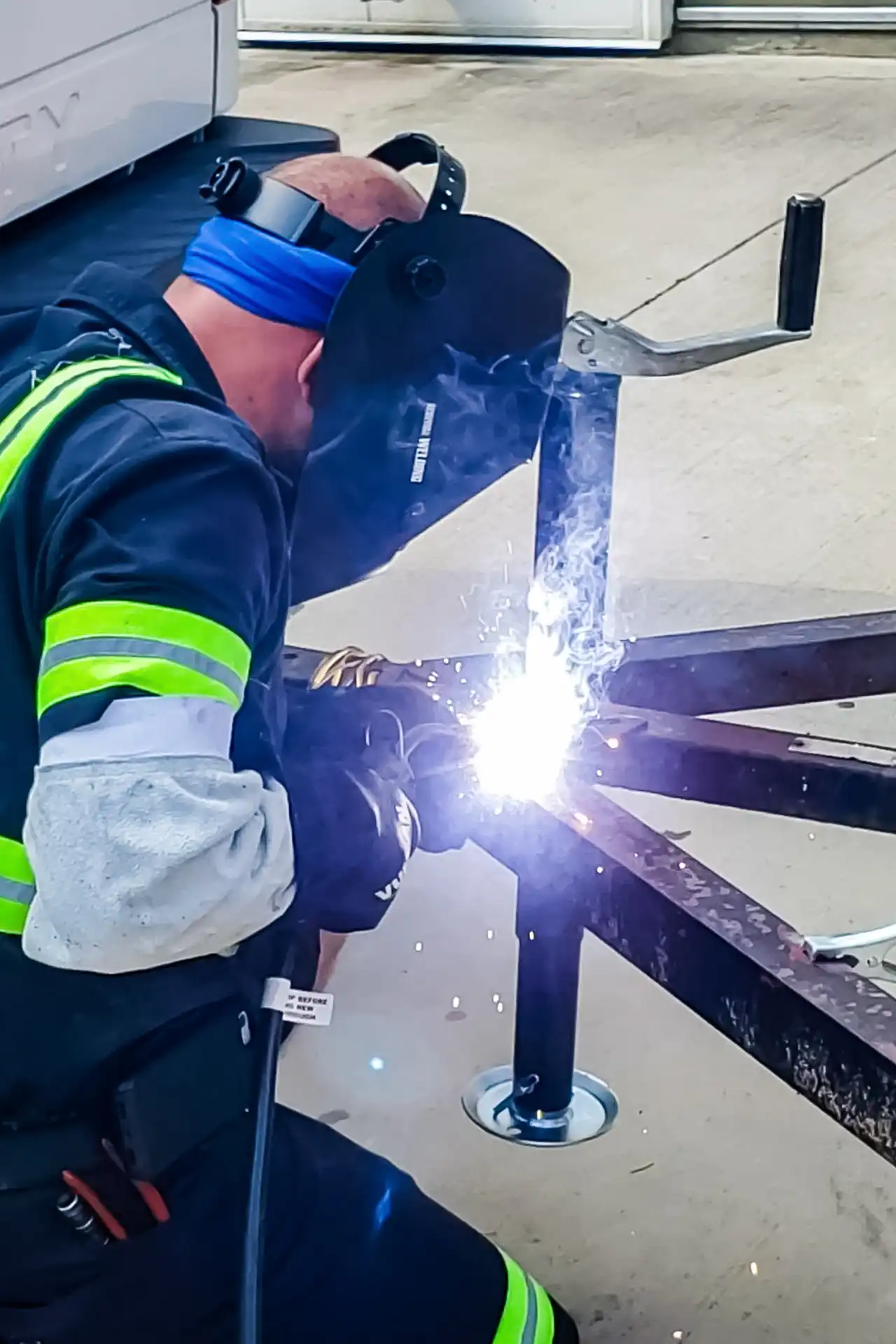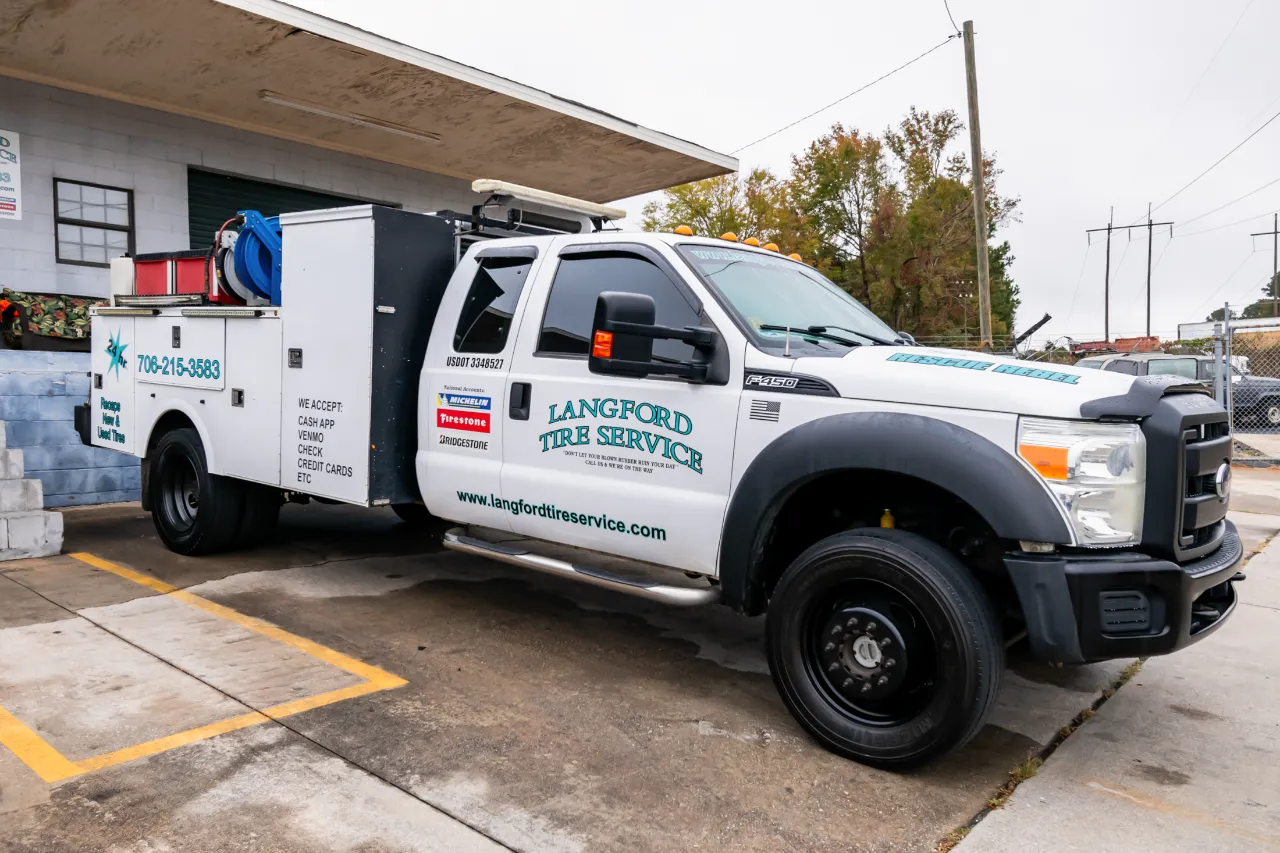Every over-the-road tractor relies on its frame rails and cross-members to maintain integrity. Weakening components can cause cracks, distortion, and corrosion, which can lead to downtime, safety issues, and financial losses. Reinforcing frames early is crucial for maintaining, ensuring safety, and protecting assets.

The Strategic Importance of a Sound Chassis
Every over-the-road tractor—whether it transports refrigerated groceries or dimensional lumber—relies on its frame rails and cross-members to maintain structural integrity. When these components weaken, operational risks increase significantly. Cracked flanges can spread quickly under cyclic loading; distorted cross-members affect driveline alignment; corrosion hidden beneath road grime weakens the very geometry that keeps axles square. In a competitive freight market, any unplanned downtime caused by frame failure reduces profit margins and risks contractual reliability. Therefore, reinforcing frame rails before visible damage appears is not just preventive maintenance; it is a wise asset-management strategy that protects schedules, safety ratings, and insurance premiums.
Principal Drivers of Frame Fatigue
Overloading and Trailer Incompatibility
The most common cause of rail damage is ongoing operation at or above the gross combination weight rating. Even small, repeated overloads create extra bending forces on suspension hangers, fifth-wheel brackets, and cross-member welds. Trailer choice exacerbates the problem: a short, stiff drop-deck creates significantly different torsional stresses than a 53-foot dry van. Understanding the dynamic relationship between tractor wheelbase, trailer length, and cargo distribution helps maintenance managers identify potential stress points and plan targeted inspections.
Corrosion Accelerants
In the southeastern United States, the humid subtropical climate of Georgia may lull operators into complacency; nevertheless, rigs travelling the I-95 corridor or venturing into northern states encounter chloride-rich anti-icing chemicals that infiltrate lap joints and drain holes. Oxidation pits serve as micro-crack initiators. Once a pit surpasses a critical depth, cyclical stress amplifies it until a through-thickness fracture occurs. Regular freshwater rinsing, inspection with angled mirrors, and the application of wax-based internal cavity sealers extend the service life of steel substrates.
Torsional Shock and Road-Surface Variability
Potholes, expansion joints, and uneven loading docks cause chassis rails to experience rapid torsional impulses. When one wheel drops sharply compared to its opposite, the resulting twist concentrates along the open “C” section of standard heavy-duty frames. Over time, bolt holes enlarge, webs deform, and weld toes develop hairline cracks. Vigilant torque checks and periodic use of a dial indicator across flange planes identify early distortion before cracks form.
Metallurgical Considerations
Modern heavy-duty truck frames are made from quenched and tempered high-carbon steel with a minimum yield strength of 110 ksi to 130 ksi. These alloyed steels provide excellent strength-to-weight ratios but are vulnerable to hydrogen-induced cracking if not welded properly. Before any work begins, technicians must verify the material grade through OEM documentation or direct hardness testing. Filler wire selection must match or surpass the tensile properties of the base metal. The AWS D1.1 standard specifies electrode classifications, such as E110T-FCAW-G, for flux-cored arc welding (FCAW). Additionally, the small margin between effective heat input and excessive grain growth makes careful process control crucial.
Comprehensive Inspection Protocol
A formal inspection process should proceed in three phases:
- Visual and Mechanical Cleaning: Remove scale, undercoating, and grease with rotary wire brushes and solvent wipes. A clean surface reveals any discontinuities that might otherwise be hidden.
- Non-Destructive Testing: Magnetic particle examination remains the industry standard for ferromagnetic steels; fluorescent wet suspension highlights sub-surface indications with high sensitivity. Dye-penetrant testing offers a supplementary check on stainless or aluminum structural components.
- Dimensional Verification: Use tram gauges and laser alignment tools to measure frame diagonals. Deviations suggest plastic deformation or movement of the rivet or spring-hanger, indicating that further investigation is needed.
Comprehensive photographic documentation supports warranty claims, informs engineering evaluations, and satisfies DOT inspection auditors assessing post-repair compliance.
Reinforcement Methodologies Explained in Narrative Form
Two main reinforcement techniques dominate the aftermarket repair scene: fish-plating and boxing-in.
- Fish-plating involves overlaying a diamond-shaped, tapered doubler plate across the affected rail section. The plate’s acute ends, positioned at 45-degree angles, disperse stress risers and ensure gradual load transfer from the parent metal to the reinforcement. Fish-plating is effective for localized crack arrest because it adds minimal mass and can be installed without extensive disassembly of auxiliary systems. However, technicians must feather-grind plate edges smoothly; abrupt terminations may cause new cracks to form.
- Boxing-in transforms the original “C” channel into a closed rectangular section by welding a steel plate along the rail’s open face. This method significantly boosts torsional rigidity and is especially beneficial when tractors are upgraded with more horsepower, pusher axles, or new vocational bodies that shift centre-of-gravity profiles. The downside is the added weight and reduced accessibility for future maintenance. Ensuring proper corrosion protection inside the boxed cavity through the application of drain holes and cavity wax is crucial.
In practice, these techniques are not mutually exclusive; strategic fish-plates can anchor a longer boxed segment, thereby providing localized strength while maintaining overall stiffness.
Preparatory and Procedural Welding Controls
Since structural welding on chassis rails falls under the jurisdiction of the Federal Motor Carrier Safety Regulations and AWS D1.1, Langford Tire Service follows the following procedural safeguards:
- Joint Preparation: All reinforcement plates are bevelled at 45 degrees with a consistent 1/8-inch root gap to ensure full-penetration welds. Parent-metal paint, galvanic coatings, and rust are removed one inch beyond the heat-affected zone to prevent contaminant entrapment.
- Preheat and Post-Heat: For materials exceeding 0.25-inch thickness, engineers require an even preheat and post-heat temperature of 250 °F, with interpass temperatures not exceeding 400 °F. Controlled cooling, sometimes aided by insulating blankets, helps equalize residual stresses and reduces the likelihood of martensitic transformation.
- Process Selection: Dual-shield flux-cored arc welding (FCAW-G) offers deep penetration, high deposition rates, and low hydrogen levels when utilized with an appropriately dried CO₂/argon shielding gas blend. Uphill stringer beads, instead of wide weave passes, reduce slag inclusions.
- Sequence and Distortion Control: Switching weld locations from one side of the rail to the other helps maintain even thermal distribution, which prevents angular distortion. Clamps and strong-backs maintain frame alignment throughout the process.
Quality Assurance and Documentation
Upon cooling to ambient temperature, each weld undergoes magnetic particle inspection. Discontinuities are ground out and repaired immediately to prevent rework during a future DOT audit. Bolted reinforcements are marked with a torque stripe using high-visibility paint; technicians re-torque fasteners after 500 miles and again during the next quarterly service interval. Finally, an epoxy primer and two-part polyurethane chassis black coating provide corrosion resistance that meets fleet finish standards.
Maintenance supervisors receive a digital package containing procedure specifications, welder qualification records, consumable lot numbers, and before-and-after imagery. This comprehensive file meets federal record-keeping requirements and streamlines claims processing if an accident investigator examines chassis integrity.
Post-Reinforcement Preventive Practices
A reinforced frame requires continuous oversight. Operators should include the following steps in their preventive maintenance checklist.
- Flush boxed sections with low-pressure water at each scheduled wash to remove road salts.
- Inspect torque stripes on reinforcement bolts for movement. Any displacement signals indicate loosening caused by vibration.
- Check frame camber yearly with laser tools to ensure it stays within OEM tolerances.
- Record total cumulative mileage since reinforcement. While the modification increases service life, no steel component is entirely immune to fatigue; tracking mileage helps plan future refurbishment.
Regulatory and Warranty Considerations
Georgia’s Department of Public Safety, Motor Carrier Compliance Division, conducts random roadside inspections in conjunction with the Commercial Vehicle Safety Alliance. A carefully performed reinforcement receives positive comments in inspection logs, whereas welding beads showing undercut, porosity, or uneven leg size can lead to enforcement action. Additionally, some OEM warranties stipulate that only certified facilities are permitted to perform chassis modifications. Langford Tire Service has AWS-certified personnel and liability coverage to protect fleet owners from denied warranty claims or insurance disputes.
The Financial Logic of Proactive Reinforcement
A single roadside frame failure can lead to cascading costs, such as heavy-duty towing, hotel bills for drivers, expedited freight transfers, CSA score penalties, and customer attrition. Conversely, scheduling reinforcement during a planned maintenance window allows fleets to align downtime with routine oil changes or brake relining. When spread over the extended lifespan of the frame rail repair, the additional cost per mile is minimal compared to the reputational damage caused by a catastrophic breakdown. Additionally, insurers often offer lower premiums for documented structural upgrades, further strengthening the business case for systematic cross-member welding and rail reinforcement.
Conclusion: Building Resilience into Every Mile
In a freight economy marked by shrinking delivery windows and increased safety scrutiny, the strength of a tractor’s chassis is a vital factor for profit. Through disciplined inspection protocols, scientifically based reinforcement methods such as fish-plating and boxing the frame, and strict quality assurance practices, Langford Tire Service provides over-the-road carriers with chassis systems that can withstand the demands of interstate commerce. Investing in these measures today ensures that future hauls run smoothly, protecting both public safety and corporate reputation.
If your fleet operates in the Southeast or if your routes frequently pass through Georgia, consider scheduling a comprehensive chassis assessment with Langford Tire Service in Evans, GA. Our AWS-certified welders utilize cutting-edge procedures to deliver dependable diesel repair solutions in Georgia, ensuring your business operates smoothly. Contact us to schedule an inspection at a time that suits your dispatch cycle, and benefit from the assurance that comes from partnering with a shop committed to structural excellence.
News & Articles
Read About The Latest in Industry
Here, you'll find regular articles covering a wide range of topics related to diesel repair, maintenance, and troubleshooting.
Don't Take our word for it.
Read Customer Testimonials.
Contact Us
Let us know what is going on with your vehicle, and we will get back to you soon with a quote.





